Earth Day 2015: Our Favorite Photos of the Planet
Today, people around the world will celebrate the 45th Earth Day, an annual event designed to pay tribute to the environment and promote ways to protect our home planet. More than 1 billion people worldwide are expected to take part in Earth Day this year, with activities that include environmental rallies, tree planting and other service projects. At Live Science, we write about planet Earth every day, so to mark the occasion, we'd like to share some of our favorite photos of this beautiful world. Check out the images that symbolize Earth Day to us, and why we think they're significant.
Earth lights at night

NASA's Suomi NPP satellite captured this image of the Western Hemisphere at night in 2012. The satellite is equipped with infrared imaging technology that allows it to observe everything from wildfires on the Earth's surface to reflected moonlight and auroras. All light sources except for artificial lights were removed from this particular image, allowing scientists to zero in on the distribution of human activity in one corner of the globe.
I find it fascinating (and reassuring) that, despite all the bright lights you see here, there are still places on the planet that aren't touched by the pollution of city lights. (Image Credit: NASA)
—Elizabeth Palermo, Staff Writer
Denali National Park
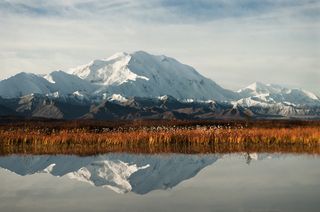
Fall is one of the best times to visit Denali National Park — the tundra's fall colors rival anything you can find in the lower 48 states. And I've always been bowled over by Denali and the Alaska Range. Seeing the mountains as a kid inspired my lifelong curiosity about how the Earth works. I wanted to know what made those mountains. (Image Credit: NPS Photo/Tim Rains)
Sign up for the Live Science daily newsletter now
Get the world’s most fascinating discoveries delivered straight to your inbox.
—Becky Oskin, Senior Writer
Earthrise
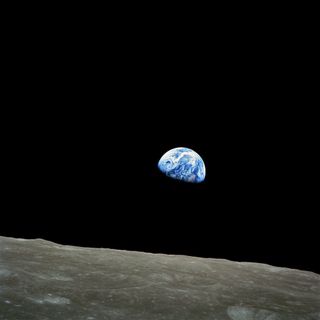
As if a swirling marble hanging in a vast pool of nothingness, Earth rises above the lunar horizon against the backdrop of deep space on Dec. 24, 1968. I love how the ethereal image, snapped by astronaut Bill Anders during the first manned mission to reach the moon, evokes both a sense of solitude and intimacy. That Christmas Eve, the astronauts aboard the Apollo 8 spacecraft — Anders, Frank Borman and Jim Lovell — held a live broadcast, showing the world their images of Earth and the moon. During the broadcast, Lovell said, "The vast loneliness is awe-inspiring and it makes you realize just what you have back there on Earth." The group then took turns reading from the Book of Genesis, which describes the biblical tale of God creating Earth and appointing man as its caretaker. (Image Credit: NASA)
—Jeanna Bryner, Managing Editor
Majestic Mount Rainier
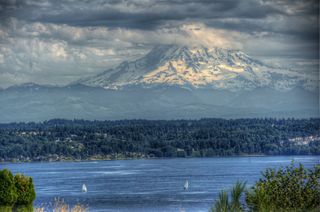
Mount Rainier towers 14,410 feet (4,392 meters), making it visible to the people of Seattle and the surrounding cities of the Pacific Northwest. It's an immense mountain, and I never tired of seeing it as a child whenever I looked east to the Cascade Mountains. But though it looks serene, Mount Rainier is also an active volcano. It last erupted about 150 years ago, and residents of surrounding towns have volcano drills that aim to prepare them for an eruption, according to the National Park Service.
Mount Rainier National Park contains 25 glaciers across nine large watersheds, with 382 lakes and 470 rivers and streams, according to the National Park Service. (Image Credit: Ben Grey, Creative Commons)
—Laura Geggel, Staff Writer
Namib desert dunes
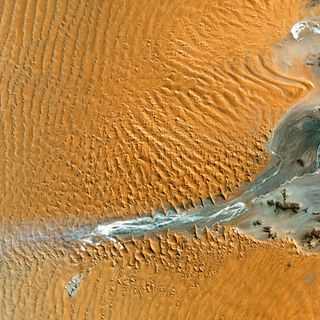
The Landsat fleet of satellites has been keeping tabs on the planet since 1972. It's hard to choose just one of my favorite images, but I'm a big fan of this photo of Namibian sand dunes, taken by Landsat 7 in 2000. The Namib desert (a dream destination for me) has some of the tallest dunes in the world, with some of them standing up to 980 feet (300 meters) high. If you think this image looks otherworldly, compare it to satellite photos of sand dunes on Mars; you'll be amazed at how similar they seem. (Image Credit: USGS/NASA Earth Observatory)
—Megan Gannon, News Editor
Pale blue dot
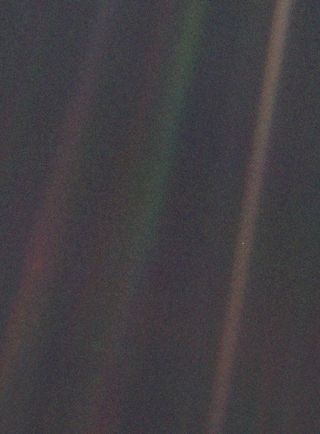
This image of Earth puts everything in perspective. Taken by Voyager 1, from more than 4 billion miles away, the "pale blue dot" image is a reminder of how tiny — and precious — our home is within the cosmos. (Image Credit: NASA)
—Karen Rowan, Health Editor
Bright northern lights
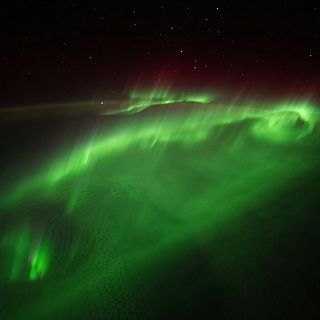
European Space Agency astronaut Alexander Gerst shared this photograph, taken from the International Space Station, on social media on Aug. 29, 2014. I've never seen the northern lights, but I imagine it would be even more spectacular from space. The eerie green glow is at once beautiful and otherworldly. (Image Credit: NASA/ESA/Alexander Gerst)
—Tanya Lewis, Staff Writer
Saturn and Earth
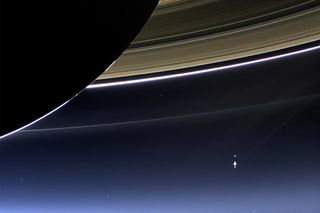
On July 19, 2013, NASA’s Cassini spacecraft snapped 141 images of the ringed planet. The full mosaic encompasses 404,880 miles (651,591 kilometers) of space, but my favorite part of the image is the "pale blue dot" in the lower right corner (marked by the arrow). That’s the Earth seen from roughly 746 million miles (1.2 billion km) away. With no surface details visible, Cassini’s image reminds us of how small our home planet is. (Image Credit: NASA/JPL/Cassini)
—Shannon Hall, Staff Writer
To the moon and back
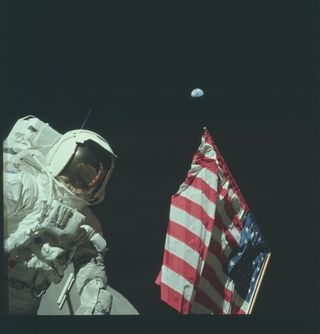
In this photo, taken on Dec. 13, 1972, Apollo 17 astronaut Harrison Schmitt poses next to the American flag on the surface of the moon. The highest part of the flag looks like it's reaching toward Earth, which is visible as a small, bright smudge in the background. This photo has long been a favorite of mine, and it always reminds me that our planet is a small but remarkable part of the immense cosmos. I've often wondered what Schmitt (and the other 11 men who walked on the moon) were thinking as they gazed back at Earth from the lunar surface. How did these spectacular views change how they saw our home planet?
—Denise Chow, Sci-Tech Editor
Follow Live Science @livescience, Facebook & Google+.

Denise Chow was the assistant managing editor at Live Science before moving to NBC News as a science reporter, where she focuses on general science and climate change. Before joining the Live Science team in 2013, she spent two years as a staff writer for Space.com, writing about rocket launches and covering NASA's final three space shuttle missions. A Canadian transplant, Denise has a bachelor's degree from the University of Toronto, and a master's degree in journalism from New York University.
Most Popular



